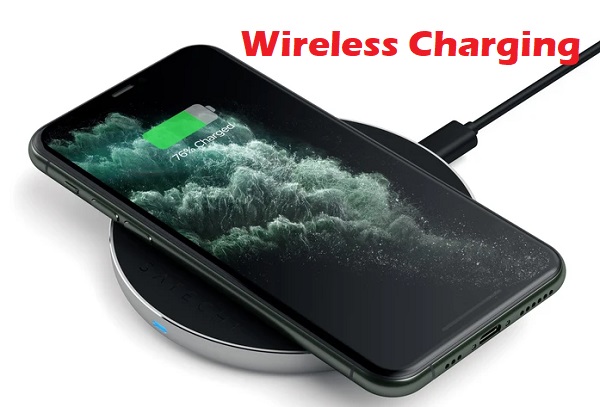- Charging pads that use tightly-coupled electromagnetic inductive or non-radiative charging.
- Charging bowls or through-surface type chargers that use loosely-coupled or radiative electromagnetic resonant charging that can transmit a charge a few centimetres.
- Uncoupled radio frequency (RF) wireless charging that allows a trickle charging capability at distances of many feet.
Both tightly coupled inductive and loosely-coupled resonant charging operate on the same principle of physics, the time-varying magnetic field induces a current in a closed loop of wire.
How wireless charging works?
It works like this:
- A magnetic loop antenna (copper coil) is used to create an oscillating magnetic field, which can create a current in one or more receiver antennas.
- If the appropriate capacitance is added so that the loops resonate at the same frequency, the amount of induced current in the receivers increases.
- This is resonant inductive charging or magnetic resonance, it enables power transmission at greater distances between transmitter and receiver and increases efficiency.
- Coil size also affects the distance of power transfer. The bigger the coil, or the more coils there are, the greater the distance a charge can travel.
In the case of smartphone wireless charging pads, for example, the copper coils are only a few inches in diameter, severely limiting the distance over which power can travel efficiently.
But when the coils are larger, more energy can be transferred wirelessly. That's the tactic WiTricity, a company formed from research at MIT a decade ago, has helped pioneer. It licenses loosely-coupled resonant technology for everything from automobiles and wind turbines to robotics.
In 2007, MIT physics professor Marin Soljačić proved he could transfer electricity at a distance of two meters. At the time, the power transfer was only 40% efficient at that distance, meaning 60% of the power was lost in translation. Soljačić started WiTricity later that year to commercialize the technology, and its power-transfer efficiency has greatly increased since then.
In WiTricity's car charging system, large copper coils over 25 centimetres in diameter for the receivers that allow for efficient power transfer over distances up to 25 centimetres.
The use of resonance enables high levels of power to be transmitted (up to 11kW) and high efficiency (greater than 92% end-to-end), according to WiTricity CTO Morris Kesler. WiTricity also adds capacitors to the conducting loop, which boosts the amount of energy that can be captured and used to charge a battery.
Last year, Japan-based robotics manufacturer Daihen Corp. began shipping a wireless power transfer system based on WiTricity's technology for automatic guided vehicles (AGVs). AGVs equipped with Daihen's D-Board wireless charging system can simply pull up to a charging area to power up and then go about their warehouse duties.
While charging at a distance has big potential, the public face of wireless charging has until now remained with charging pads.

Post a Comment